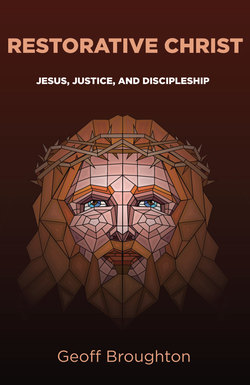Restorative Christ

Реклама. ООО «ЛитРес», ИНН: 7719571260.
Оглавление
Geoff Broughton. Restorative Christ
Restorative Christ
Preface
Acknowledgments
Abbreviations
Introduction
Reconciliation or Justice?
Justice without Retaliation
Interlude
Justice with Repentance
Justice with Repair
Conclusion
Bibliography
Index
Отрывок из книги
Jesus, Justice, and Discipleship
Geoff Broughton
.....
These definitions highlight some of the concerns already mentioned. They include working to put things right within a context of multiple stakeholders (justice with reconciliation); responding to wrongdoing in everyday contexts transcending legal frameworks and approaches (justice with repentance); and the pastor’s perspective of Practical Theology (justice without retaliation; justice with repair). Each definition marks an approach to justice involving a community comprised of victims, wrongdoers and others in relational proximity. It may be contrasted with the distance and enmity between stakeholders in more adversarial approaches identified by Taylor, who describes three possible relational stances taken in the face of wrongdoing. First, “no-one is to blame.” This is the slogan of those with a “disengaged stance to reality” that Taylor aligns with much of secular humanism. He refers to this as “the therapeutic outlook.” Second, “the enemy is to blame.” Taylor identifies this as “the practice of religious violence.” This is the cry of the self-righteous who find their power to act by scapegoating the distant other. I will argue that Jesus’ enemy-love directly confronts the injustice of blaming of the enemy on religious grounds. Third, “we are all to blame.” This is the “restoration of a common ground . . . [that] opens a new footing of co-responsibility to the erstwhile enemy.”54 Taylor identifies the third relational stance with the approach taken by the Truth and Reconciliation Commission (1996–98) convened to deal with apartheid-era violence in South Africa. Taylor contends that it satisfies the dual requirements of justice and truth because it is able “to bring terrible deeds to light, but not necessarily in a context of retribution.”55 Taylor admits that “no one knows if this will ultimately work [because] a move like this goes against the utterly understandable desire for revenge by those who have suffered, as well as all the reflexes of self-righteousness.”56 His analysis of wrongdoing explains why neither the so-called “closure” offered by therapeutic process nor the “revenge” offered by religious righteousness is actually able to restore justice in contexts like post-apartheid South Africa. My principal aim is to demonstrate that the centre of Christian theology, namely Jesus’ life, death and resurrection, informs and enables Taylor’s third response to wrongdoing. My central argument depends on interpretive commitments as I read the biblical witness to Jesus Christ, as well as convictions about Christian practice as a way of life that is reflected in my approach to both.57 Once more it was the street was the classroom where, with scant regard for either technique or process, I learned what it means follow the restorative Christ.
Jesus and justice: are they compatible ways of life?
.....